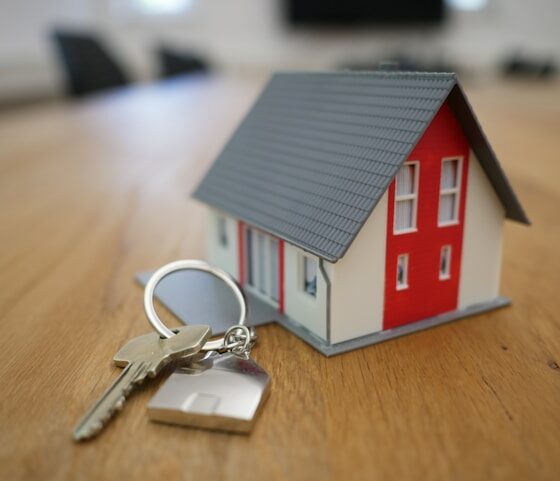Important Things To Remember When Viewing A Property

Although house buying and selling are expected to take a 20% dip in 2022, it does not take away from the vibrancy the real estate market is associated with.
Every year, people take out mortgages to buy their dream homes or prepare for renovations. With all the hustle and bustle of the housing industry, it pays to learn a thing or two about the houses you view. Having the following pointers in mind can influence the choice of the one you settle on.
1. Is it a Staged Property?
Although not much is discussed, some psychology is used with house sales. Staging a house involves strategically positioning things to create a positive experience for the potential buyer.
Mirrors, furniture, lighting, colours, flowers are a few examples of household items beautifully positioned to create the feeling of an occupied home. These placements are usually done to give you a feeling of how your home might look when you buy and decorate it with your own items.
Sometimes, staged houses can be described as display homes. So, whenever you are viewing a property up for sale, it would be useful to find out if it is a display home or not. In certain instances, a potential buyer may be carried away by the property’s presentation and may forget to pay close attention to other parts of the house.
Although it feels nice to know that display homes are ready-to-move-in properties, it pays to remain neutral to help you make a sound decision.
2. Storage Space Availability
A house may satisfy the aesthetic requirements, but in terms of storage, it may be nothing to write home about. Storage space is a crucial component of any property you intend to buy, and it explains the need to focus on that. If it helps, before setting a date for the property viewing, you may want to consider putting together a list of things you want in a house. If you have storage space listed, you will remember to look out for it.
Admittedly, it is quite challenging to properly assess an empty house when your focus is on storage. Perhaps, this is why some real estate agents use display homes to help buyers visualise the space. In your search for that extra room, it pays to think about where to keep your spare belongings, cleaning tools, etc.
Furthermore, can you find enough room to fix a built-in cupboard or shelves? The last thing you want is to end up using your interior corridors to stack your extra belongings. Fortunately, if there is an extra room after you and your family settle in, that space can be converted into utility storage.
3. Roof age
Roof replacement is costly. According to checkatrade.com, the national average for a roof replacement is £5,500, and the least you will pay for a three-bedroom house is £8,000. In general, the bigger the house, the more likely you will pay for a roofing job. Therefore, when you feel connected to a particular property and intend to buy it, remember to ask for a roof check.
Obviously, you will not be climbing up the roof yourself. However, you have the right to hire a roof installation professional to conduct these checks.
According to experts, a new roof should last twenty or more years depending on the materials’ quality. For example, building experts say asphalt shingles can be problematic as roofing materials. They tend to have little resistance to the elements and therefore deteriorate faster than other roofing materials.
Additionally, flat roofing can be tricky to deal with, especially because they collect puddles of water, leading to poor drainage issues. All these are critical things to consider when viewing a property. It is better to know what you’re dealing with than to be caught unawares after moving into your newly-bought home.
4. Attic Condition
The attic condition can tell you all there is to know about the entire structure. Attics are the closest to the roof of the building. For this reason, if there are leakages from the top, the attic will show signs of that.
Unfortunately, many buyers tend to overlook this part of the house because they have little to no use. On the contrary, a properly insulated attic can be converted into a storage space, home office, or an extra bedroom. It helps to look for visible signs of dampness on the walls and ceiling. Again, you can look for watermarks on the flooring, peeling walls, or bubbled wall paint.
If you notice any of these signs, you might have to pass on this property. If you do not wish to, you can use a poorly-conditioned attic to haggle the actual cost of the house. Another alternative is to compel the seller to repair the attic without adding the incurred cost to the going price. This stage will require a great deal of negotiation and creativity.
5. Assess the External Environment
First of all, what does the neighbourhood feel like to you? Is it a place you can make a home and feel comfortable living there?
These are vital questions to ask yourself during the viewing process. Sometimes, you might find what looks like the ideal home, but the environment includes a mix of pubs, bars, or other noisy establishments. Again, your potential home might be directly in a flight path, which comes with its noise levels.
Perhaps, at the viewing, the area sounded quiet and peaceful, but it transformed into a sound pollution hub at night. To avoid missing out on this crucial piece of information, you can make it your mission to visit the neighbourhood at night. You could search the neighbourhood online or ask around to see the other establishments in the area. You might learn something that could become the deciding factor in whether to buy the house or not.
To conclude, it is worth noting that viewing a house while feeling overly excited could cloud your judgment. You will find it useful to do these checks with an open and objective mind.







